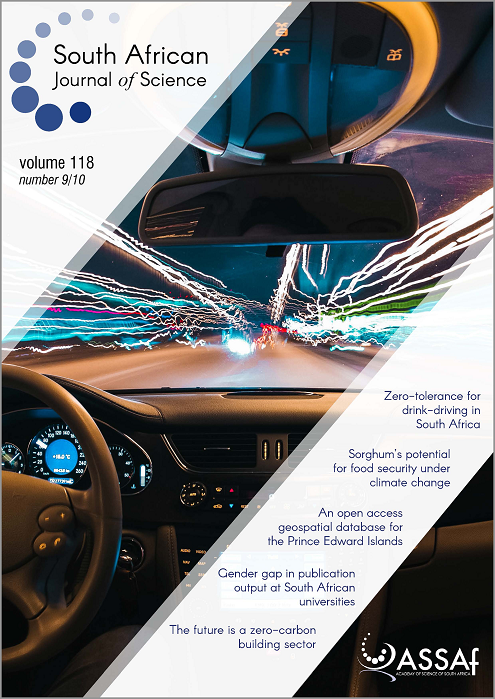Social network analysis of a landscape-scale conservation initiative in South Africa
DOI:
https://doi.org/10.17159/sajs.2022/11703Keywords:
Dassenberg Coastal Catchment Partnership, environmental governance, landscape-scale conservation, social network analysis, learning capacity, network resilienceAbstract
Assessment of social relations, including social network analysis, is central to understanding collaborative processes for environmental decision-making and action. The capacity of network role players to learn and adapt appropriately to uncertainty and change is a critical determinant of the resilience of socialecological systems. Poor social network structure can predispose failure. In this study, we used social network analysis to explore learning capacity and network resilience in a multi-authority conservation initiative on the West Coast of South Africa (Dassenberg Coastal Catchment Partnership). Our analysis focused on structural variables for network learning and resilience, namely connectivity, heterogeneity, and centrality. The governance network was found to be structurally connected, with the interaction between heterogeneous organisations and sectors, and centralised around a core group of actors. The network had good structural features to enable learning. However, the high level of centrality, and dependence on a small number of core actors, rendered the network potentially vulnerable to dealing with complex challenges. We recommend that core actors (1) reflect on their core functions and whether the network can absorb these functions if they were to leave and (2) tap into the knowledge potential of actors on the network periphery or invite new actors to the network when dealing with complex challenges. This may require the network to diverge into decentralised subgroups to deal with complex issues. We further suggest that the Dassenberg Coastal Catchment Partnership network incorporate social network research with qualitative monitoring into a long-term plan to monitor the movement and influence of actors as the initiative evolves.
Significance:
- This study illustrates how social network analysis can help researchers, public-sector organisations, and donor agencies to monitor the structural features of governance networks that enable or disable learning and resilience within landscape-scale conservation initiatives.
- Our results illustrate how social network analysis can assist public-sector actors to reflect on their roles and whether there is redundant competency within the network to maintain its resilience.
Downloads
Published
Issue
Section
License

All articles are published under a Creative Commons Attribution 4.0 International Licence
Copyright is retained by the authors. Readers are welcome to reproduce, share and adapt the content without permission provided the source is attributed.
Disclaimer: The publisher and editors accept no responsibility for statements made by the authors
How to Cite
- Abstract 591
- PDF 570
- EPUB 192
- XML 228
- Supplementary material 136
Funding data
-
Nelson Mandela University
-
United Nations Development Programme
Grant numbers UNDP PIMS ID:4943












.png)